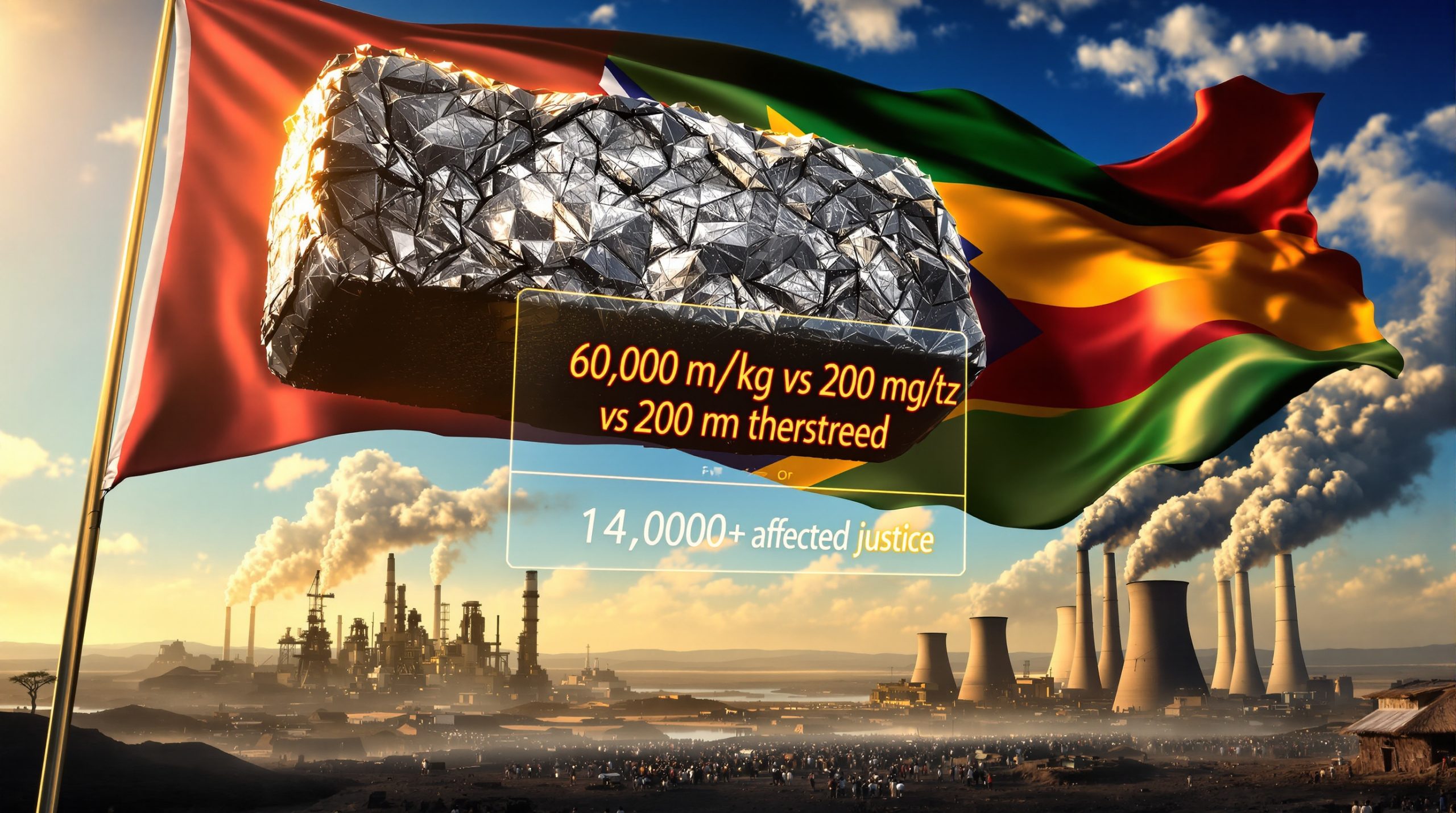Understanding Base Brand Recalibration in Global Markets
Manganese ore high grade index adjustment represents a systematic recalibration of reference standards used by price reporting agencies to establish benchmark values for premium manganese ore products. These modifications ensure pricing indices accurately reflect current market conditions, particularly the composition of materials being actively traded in China's dominant import sector. Furthermore, these adjustments align with broader iron ore price trends that influence global commodity markets.
The November 2025 adjustment by Fastmarkets exemplifies how price discovery mechanisms adapt to evolving market dynamics. According to the company's official statement, the changes were implemented to better reflect the bulk of ore traded in today's market while accounting for higher liquidity and diversity of material in these markets.
How Do Price Reporting Agencies Determine When Index Adjustments Are Necessary?
Market Observation and Data Collection Framework
Price reporting agencies continuously monitor spot market transactions, analyzing trading volumes, product specifications, and liquidity patterns across different ore grades. Fastmarkets conducted a period of observation of spot market trends and developments before implementing their November 2025 manganese ore high grade index adjustment.
The decision-making process involves several key considerations:
• Trading volume concentration: When the majority of transactions involve ore specifications different from current base brands
• Liquidity distribution changes: Shifts in the geographic or grade-based concentration of active trading
• Product diversity expansion: Introduction of new ore types or specifications gaining market acceptance
• Supply chain evolution: Changes in dominant producing regions or processing methods
Quantitative Assessment Methodology
The adjustment process relies on quantitative analysis of market behaviour patterns. Fastmarkets gathered sufficient data and background information before implementing their base brand recalibration, though specific thresholds for triggering adjustments remain proprietary to maintain competitive advantage.
Market participants can engage with this process through structured feedback mechanisms. For the November 2025 adjustment, Fastmarkets established dual communication channels at pricing@fastmarkets.com and ores_alloys@fastmarkets.com, allowing industry stakeholders to provide input on proposed changes. Additionally, the pricing methodology for manganese indices provides comprehensive guidance on these adjustments.
What Specific Changes Occurred in the November 2025 Manganese Ore Index Adjustment?
Scope of Base Brand Modifications
The manganese ore high grade index adjustment affected two critical benchmarks in the global pricing ecosystem:
| Index Code | Index Name | Market Location | Implementation Date |
|---|---|---|---|
| MB-MNO-0001 | Manganese ore high grade index | CIF Tianjin | November 1, 2025 |
| MB-MNO-0005 | Manganese ore high grade port index | FOT Tianjin | November 1, 2025 |
Both indices track spot prices of high-grade manganese ore in China markets, with manganese content and chemical specifications aligned to match prevailing brands. The adjustment maintained existing methodological parameters while updating the underlying base brand composition.
Implementation Timeline and Process
The adjustment followed a structured timeline designed to provide market participants adequate preparation time:
-
October 13, 2025: Initial announcement of forthcoming adjustment
-
November 1, 2025: Effective implementation date
-
November 3, 2025: Formal pricing notice publication
This approach allowed approximately three weeks for market participants to assess implications and adjust their trading strategies accordingly.
Chemical Specification Stability
A critical aspect of the November 2025 manganese ore high grade index adjustment involved maintaining existing chemical specifications to preserve index stability. This decision reflects a strategic choice to modify market representativeness while preserving methodological consistency.
Key Insight: The adjustment was kept within current parameters of the methodology, using the same chemical specifications, to maintain stability of the indices while improving market representation.
Fastmarkets specifications define only chemical and physical properties, with soft factors and specific base brands remaining undisclosed to maintain market integrity and competitive balance.
Why Is China Central to Global Manganese Ore Price Discovery?
Market Dominance and Industrial Integration
China's position as the world's largest steel producer creates fundamental drivers for manganese ore price discovery. The selection of Tianjin as the reference point for both CIF and FOT indices reflects China's central role in global manganese consumption patterns. Moreover, the tariff impact on markets further influences these dynamics.
The concentration of steelmaking capacity in China generates several key market dynamics:
• Processing capacity concentration: Significant portions of global ferromanganese production occur within Chinese facilities
• Import dependency: China relies heavily on seaborne manganese ore imports to meet domestic demand
• Price transmission: Chinese market conditions influence global pricing patterns through arbitrage mechanisms
Tianjin Port Strategic Importance
Tianjin's selection as the reference location for both CIF (Cost, Insurance, and Freight) and FOT (Free on Truck) indices acknowledges several strategic advantages:
Logistical Infrastructure: Direct access to major steel production centres in northern China enables efficient ore distribution and processing integration.
Trading Ecosystem: Established commodity trading and financing facilities support transparent price discovery mechanisms.
Transaction Volume: High trading volumes in Tianjin-referenced transactions provide sufficient liquidity for reliable benchmark establishment.
How Do Index Adjustments Impact Different Market Participants?
Producer Response Mechanisms
Mining companies and ore producers must adapt to manganese ore high grade index adjustment changes through several operational modifications:
Contract Pricing Alignment: Long-term supply agreements tied to adjusted indices may require renegotiation to reflect new base brand compositions.
Quality Control Optimisation: Production planning adjustments to align output characteristics with evolving market preferences reflected in new base brands.
Market Positioning: Competitive positioning changes based on how closely their products match newly selected base brand specifications.
Consumer and Trader Adaptations
Steel manufacturers and trading houses face distinct challenges when responding to index modifications. These adaptations occur alongside broader shifts in the global mining landscape.
Procurement Strategy Evolution: Purchasing departments must evaluate how base brand changes affect their raw material cost structures and supplier relationships.
Risk Management Recalibration: Trading operations require adjustment of hedging strategies and derivative instrument utilisation to reflect updated benchmark characteristics.
Inventory Valuation: Existing stockpiles may experience valuation changes based on how closely they align with new base brand specifications.
What Role Do Chemical Specifications Play in Index Methodology?
Technical Parameter Framework
Chemical specifications serve as the foundation for manganese ore high grade index adjustment decisions. Fastmarkets' approach emphasises that specifications define only chemical and physical properties, maintaining technical objectivity in benchmark establishment.
The methodology prioritises stability in technical parameters while allowing flexibility in base brand selection. This approach enables indices to remain technically consistent while adapting to evolving market conditions.
Quality Parameter Hierarchy
High-grade ore specifications typically encompass several critical quality metrics:
Manganese Content Optimisation: Target concentrations that balance processing efficiency with transportation economics represent the primary specification driver.
Impurity Management: Strict limits on detrimental elements ensure consistent metallurgical performance in downstream applications.
Physical Characteristic Requirements: Lump size distributions and moisture content specifications optimise furnace efficiency and handling characteristics.
| Parameter Category | Specification Focus | Processing Impact |
|---|---|---|
| Chemical composition | Manganese and iron content | Metallurgical efficiency |
| Physical properties | Size distribution | Furnace performance |
| Moisture content | Transportation limits | Cost optimisation |
How Do Regional Variations Affect Global Index Systems?
Geographic Specification Differences
Regional variations in ore characteristics create distinct pricing dynamics that influence global manganese ore high grade index adjustment decisions. Different geological formations produce ores with varying chemical compositions and physical properties.
Geological Influence: Regional ore bodies exhibit characteristic manganese concentrations, iron content levels, and impurity profiles that affect their suitability for different metallurgical applications.
Processing Preferences: Steel production facilities often develop preferences for specific ore characteristics based on their furnace designs and operational requirements.
Transportation Economics: Distance to major consumption centres affects the competitiveness of different regional ore suppliers.
Market Integration Challenges
The existence of multiple regional specifications creates both opportunities and complications for global price discovery:
• Quality premiums: Higher-grade materials command price advantages based on their superior metallurgical performance
• Arbitrage opportunities: Price differentials between regions enable trading strategies based on specification variations
• Processing optimisation: Different steel production methods favour specific ore characteristics, creating segmented demand patterns
What Feedback Mechanisms Ensure Index Accuracy?
Industry Consultation Framework
The manganese ore high grade index adjustment process incorporates structured feedback systems designed to capture market intelligence from diverse participants. Fastmarkets established specific communication protocols for the November 2025 adjustment.
Submission Channels: Dual contact points (pricing@fastmarkets.com and ores_alloys@fastmarkets.com) enable specialised feedback on different aspects of the methodology.
Confidentiality Protection: Participants can submit sensitive market intelligence with confidentiality protection while contributing to index accuracy improvements.
Comment Publication: Non-confidential feedback becomes available upon request, promoting transparency while respecting commercial sensitivity.
Continuous Monitoring Systems
Post-implementation monitoring ensures manganese ore high grade index adjustment effectiveness through ongoing market observation:
Transaction Analysis: Regular review of trading patterns against index performance validates adjustment success.
Liquidity Assessment: Continuous evaluation of market depth and participation rates in different ore categories.
Specification Relevance: Periodic review of chemical and physical parameters to ensure continued market relevance.
Important Notice: Fastmarkets reserves the right to amend base brands and index specifications in response to fundamental changes in products and market behaviour, ensuring indices remain representative of actual trading conditions.
How Do Index Adjustments Relate to Broader Market Trends?
Supply Chain Evolution Impact
The November 2025 manganese ore high grade index adjustment reflects several industry developments that influence ore trading patterns. These changes align with broader industry innovation trends affecting global commodity markets.
Environmental Regulation Influence: Stricter environmental standards in both mining and steel production affect ore quality requirements and supplier selection criteria.
Processing Technology Advances: New metallurgical techniques enable utilisation of different ore types, expanding the range of commercially viable materials.
Sustainability Integration: Increased focus on responsible sourcing and carbon footprint reduction influences supplier preferences and trading relationships.
Future Adjustment Considerations
Several emerging trends may drive future index modifications, particularly given ongoing US–China trade war influences:
Battery Sector Growth: Expanding high-purity manganese demand for lithium-ion battery production could influence ore specification requirements.
Circular Economy Development: Recycling technology advancement may affect primary ore demand patterns and quality specifications.
Geopolitical Realignment: Trade policy changes and supply chain diversification efforts could alter global trading patterns.
What Best Practices Should Market Participants Follow?
Risk Management Strategies
Effective response to manganese ore high grade index adjustment requires comprehensive risk management approaches:
Index Diversification: Monitor multiple price references to reduce dependency on single benchmark movements and capture regional pricing variations.
Contract Flexibility: Incorporate adjustment clauses in long-term agreements to accommodate future index modifications without requiring complete renegotiation.
Market Intelligence: Maintain awareness of potential index changes through industry publications and price reporting agency communications. Additionally, consulting detailed pricing methodologies helps understand market dynamics.
Operational Adaptations
Quality Control Alignment: Ensure production specifications match evolving index standards to maintain competitive positioning in benchmark-referenced markets.
Supply Chain Optimisation: Develop relationships with suppliers producing materials that align with current and anticipated index requirements.
Financial Hedging: Utilise appropriate derivative instruments and risk management tools to protect against price volatility during adjustment periods.
Information Management: Establish systematic monitoring of price reporting agency announcements and methodology updates to anticipate market changes.
The manganese ore high grade index adjustment process represents a critical mechanism for maintaining pricing benchmark accuracy in dynamic global markets. Understanding these adjustments enables market participants to navigate evolving trading conditions while optimising their operational and financial strategies.
Ready to Stay Ahead of Base Metal Market Shifts?
Discovery Alert's proprietary Discovery IQ model delivers real-time alerts on significant ASX mineral discoveries, instantly empowering subscribers to identify actionable opportunities in base metals and other commodities before market-wide recognition occurs. Explore the potential returns from major mineral discoveries and begin your 30-day free trial today to position yourself ahead of evolving market dynamics.




